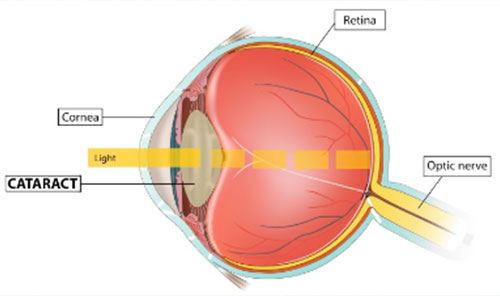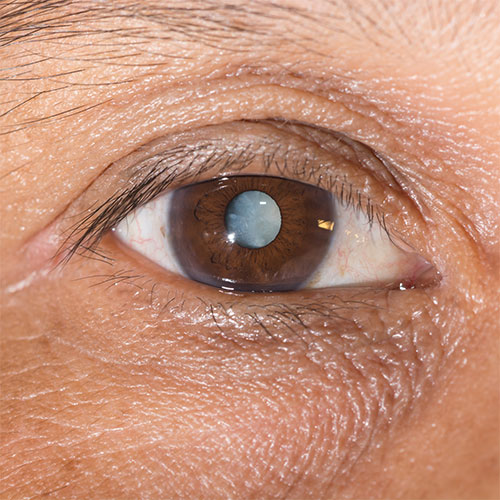Background
A cataract is a clouding of the lens inside the eye, which leads to blockage of the light entering the eye.
Risk Factors
- Age
- Sun exposure
- Eye injury
- Steroid use
- Genetics/Family history
How is cataract surgery performed?
We use the latest equipment to remove the cloudy cataract and replace it with a clear artificial lens, known as an intraocular lens (IOL).
The new lens not only restores clear vision but also reduces any pre-existing refractive error and minimises the need for glasses after the surgery.
Stages of Cataract Surgery
Stage 1 – ‘Keyhole’ surgery is used to insert an electronic probe into the eye to remove the cataract with ultrasound energy.
Stage 2 – The new clear intraocular lens is inserted and unfolded in the eye.
Stage 3 – The IOL is positioned inside the eye to clearly focus the light on the retina. The incision is self-sealing and no stitches are needed.
Possible benefits of Cataract Surgery
- Improved vision
- Improved brightness
- Improved colour (especially blues)
- Reduced need for glasses
Lens Choice
Once you’ve decided to have surgery the biggest decision you need to make is which lenses you would like inserted. There are four common choices.
- Both eyes distance focus
- This is the most common choice.
- The lens for each eye is customised to minimise any near or long sightedness and astigmatism and provide clear focus for distance objects
- If you choose this you will have minimal need for distance glasses but will need to wear reading glasses
- Both eyes near focus
- This is the most common choice for people who have been short sighted all their life
- With this choice you will have minimal need for reading glasses, but you will need to wear distance glasses
- One eye distance, one eye near (monovision)
- While this sounds like it would confuse your brain, 80% of people adapt to it very well and achieve excellent results
- Typically people still need a pair of reading glasses for very fine print.
- Side effects of this choice can include a mild loss of depth perception.
- Multifocal intraocular lenses
- Recent advances in lens technology have led to the development of these excellent lenses
- Patients typically achieve 90% spectacle independence and this will give you the ability to see clearly at both distance and near without glasses.
- Side effects of these lenses can include halos around lights at night and mild loss of contrast
- These lenses are not ideal for people with high visual demands or that do a lot of night time driving
What to expect during surgery
- The surgery is done under local anaesthetic
- In theatre your face will be covered with a drape, you will be able to hear the staff talking and the operation with take 20-30 minutes
- The operation is painless
Potential Complications of Surgery
Cataract surgery is very safe and serious complications are rare. Improvement in vision will occur for 98% of patients.
Reduced vision can occur in 1% of operations; a second operation is needed for repair in 1%; a serious infection inside your eye can occur, but this is rare – approximately 1 in 1200 cases.
Retinal tears, detachments or swelling of the macular can also occur.
What to expect after surgery
- Quick recovery and a return to normal activities in one week
- Mild irritation for one week
- Mild redness for one week
- Small amount of visible bleeding for two weeks
- Using eye drops for one month
Summary
A cataract is a clouding of the lens inside your eye. This is a natural part of aging and cataract surgery is a safe and common procedure. Using the latest technologies and the highest quality lenses I can offer an extremely high chance of improving your vision.


